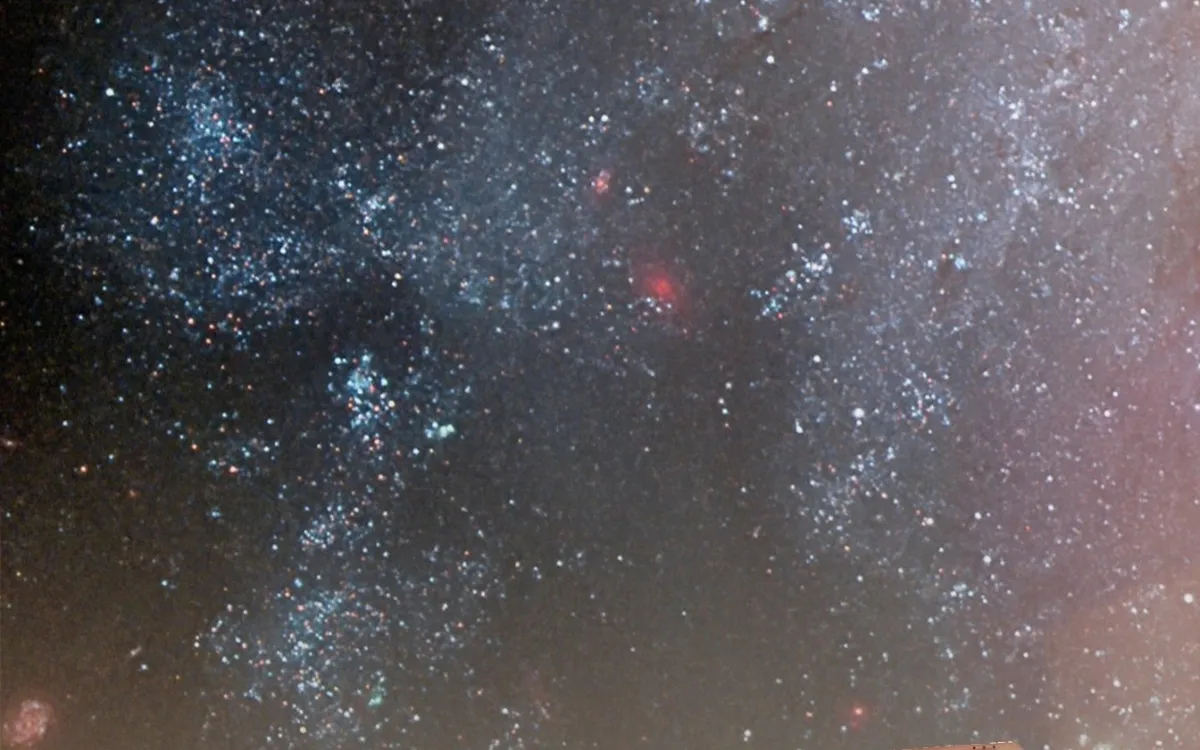
NASA’s Curiosity Mars rover has always been a captivating presence on our screens, showcasing its adventures through stunning selfies and remarkable images captured from space. Recently, on February 28, during its 4,466th Martian day—or sol—Curiosity made headlines once again by being photographed mid-drive, potentially for the very first time, by one of NASA’s orbiters.
The extraordinary image was captured by the HiRISE (High-Resolution Imaging Science Experiment) camera, which is part of NASA’s Mars Reconnaissance Orbiter. Operated by scientists at the University of Arizona, this camera provides an incredibly sharp view of the Martian surface. In the captivating photo, Curiosity is seen as a small, dark speck at the front of an extensive trail of tracks that stretch across the Red Planet. This trail covers approximately 1,050 feet (320 meters) and reflects about 11 drives that commenced on February 2, 2025. During these journeys, Curiosity navigated at a top speed of just 0.1 mph (0.16 kph), making its way from the Gediz Vallis channel toward its next scientific destination: a region believed to contain boxwork formations created by ancient groundwater billions of years ago.
Curiosity was not merely designed for stunning visuals; its mission, which began with a dramatic landing in 2012, seeks to answer a fundamental question: Was Mars ever able to support small forms of life? To explore this query, the rover has been delving into the ancient environments of Gale Crater, engaging in activities such as drilling into rocks, analyzing soil samples, and studying the planet’s climate and geology. Each discovery Curiosity makes contributes to a clearer understanding of what Mars was like billions of years ago. Notable findings include evidence of ancient rivers, lakes, and the essential chemical ingredients for life.
Curiosity’s timeline for reaching its next destination isn’t fixed; several factors influence its journey, including how its navigation software interacts with the Martian landscape and the steepness of the terrain. Engineers at NASA’s Jet Propulsion Laboratory (JPL) in Southern California collaborate closely with scientists to meticulously plan each daily drive. “By comparing the time HiRISE took the image to the rover’s commands for the day, we can confirm it was nearing the end of a 69-foot (21-meter) drive,” said Doug Ellison, Curiosity’s planning team chief at JPL.
The recent image captures Curiosity’s tracks as they wind across the Martian surface, leading up to the base of a steep slope. Since the image was taken, the rover has successfully ascended that slope. If all goes according to plan, Curiosity should reach its new scientific site within the next month. The trail it left behind may remain visible for months, unless Martian winds erase the marks. Each track and footprint on Mars narrates a story of a journey that has been unfolding for over a decade and continues to thrive.
Curiosity’s journey is just one element in the broader narrative of Mars exploration. It serves as a critical stepping stone in our ongoing efforts to understand another world. NASA and other space agencies are already strategizing the next phases of Martian exploration, utilizing insights gleaned from past and current missions. For instance, the Perseverance rover is currently collecting rock samples that could eventually be returned to Earth for further analysis. Future plans include launching additional helicopters, developing complex sample return missions, and even sending astronauts to Mars in the 2030s—a goal that once seemed like mere science fiction. Each discovery made by Curiosity lays the groundwork for these ambitious future missions, reminding us that even the slow and careful progress of a solitary rover can help realize humanity’s grand aspirations beyond Earth.
Information for this article was sourced from a press release by NASA’s JPL.
—– Like what you read? Subscribe to our newsletter for engaging articles, exclusive content, and the latest updates. Check us out on EarthSnap, a free app brought to you by Eric Ralls and Earth.com. —–